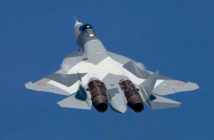By Inès Perret
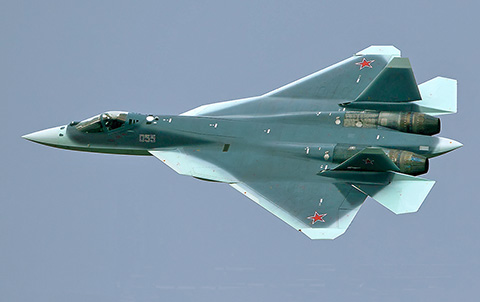
The number 5 prototype of Sukhoi’s PAK FA T-50 is now back in flight after having suffered an engine fire a while ago on one of its two NPO Saturn AL-31F turbofans. Overall, the new Sukhoi stallion is a much cleaner aircraft than the F-22 or F-35. Its lines are in fact closer to that of the sublime Northrop YF-23 Black Widow II, a prototype which lost the USAF ATF competition against the F-22 in 1991. ©A.Anikeev
It seems unfortunate and universal, but today’s so-called « fifth-generation fighter » programs all seem to be cursed and prone to high budget slippages placing a heavy sword over them… Particularly in the case of the new Sukhoi PAK-FA/T-50 jet. When Russia launched a while ago the fifth generation fighter T-50 program, referred in military parlance as the PAK-FA for Prospective Airborne Complex of Frontline Aviation (in Russian : ПАК ФА, Перспективный авиационный комплекс фронтовой авиации), the average price of a barrel of oil was getting close to and over $100, thus pouring real hard cash in the pockets of the world’s main oil producing countries, mainly in the Middle-East, South America and Russia. But this situation has since then dramatically changed, the average oil barrel price having plummeted to historic lows now at some $42 today ! He who controls the oil price market is the true master of the world in 2015. No need to put a name on that face…
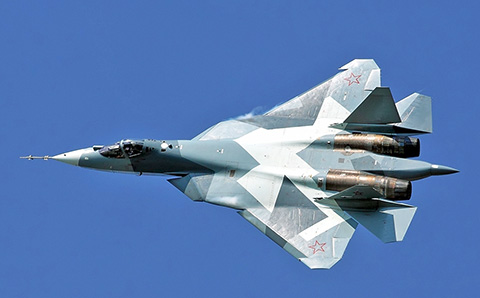
The first prototype of the T-50 PAK-FA seen during its first public display in Russia in Zhukovsky in 2011. Original geometric disruptive camouflage and lo-viz Russian red stars are very conspicuous as are the widely separated engines providing extra survival chances against IR-guided missiles. ©X.Mashakova
For the Russian military this huge drop in national profits is now clearly delaying or even jeopardizing the modernization of its forces and putting at risk some of its most prestigious armament programs, singularly the PAK-FA which —unfortunately for Russia— was supposed to be lead in full partnership with India, a country well known for conducting so many different military JV programs that it has never been fully capable of funding, or even running properly, just one to a happy end ! Reasons are many, administrative procratination being one, and many know in the aerospace sphere that in the so-called « BRIC », ony the « R » and the « C » can be regarded as serious and capable hi-tech partners. That even if it was announced once more in New Delhi that India still intends to invest $125 billion in the PAK-FA program and relaunch (or is it re-relaunch?) the unabated MMRCA competition again !
Now only two weeks away from the 2015 MAKS air show at Zhukovsky, it is clear that the Russian military may buy a smaller number of T-50 fighter jets than earlier planned. This fact was made public recently by the Deputy Defence Minister in charge of Armaments, Yuri Borisov. According to the Russian business weekly Kommersant, Russia’s military forces are set to purchase only twelve fighters initially and, after their operational testing and commissioning, will decide on how many more aircraft of this type it can afford. Let’s reminisce here that the Russian government had previously made commitments to acquire 52 Sukhoi T-50 PAK-FA (believed to be the future Su-40) until 2020, this according to last year’s Russia State Armament Program. Enought aircraft to equip two regiments (four squadrons in total) of the new Russian Air Forces — Российский военно-воздушные силы.
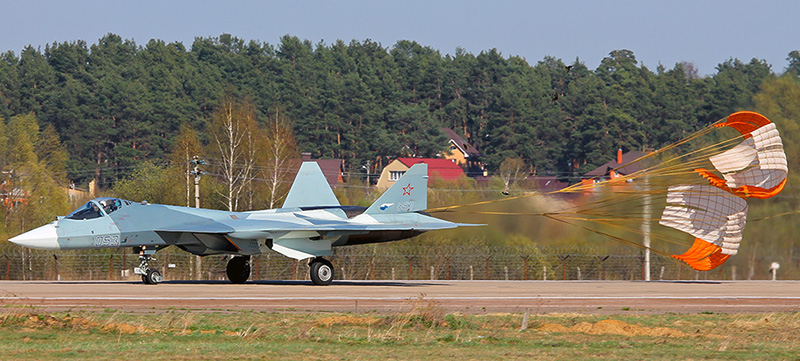
The Sukhoi T-50 number 3 prototype pictured ending its landing roll with its dual brake chute billowing behind. ©D.Alexey
Earlier this year, Yuri Borisov announced the likely reduction in the total government purchases during a visit to the Komsomolsk-on-Amur Aircraft (KnAAPO JSC) Plant, where series production of the T-50 is scheduled to start in 2016. Given the new economic conditions prevailing in Russia, the original plans may have to be adjusted it was said. ” It is better to have the PAK FA kept as a reserve, and later move forward, while squeezing everything possible for now out of the « fourth-plus generation » fighters like the Su-30 and Su-35 “, the Deputy Minister added, according to Kommersant.
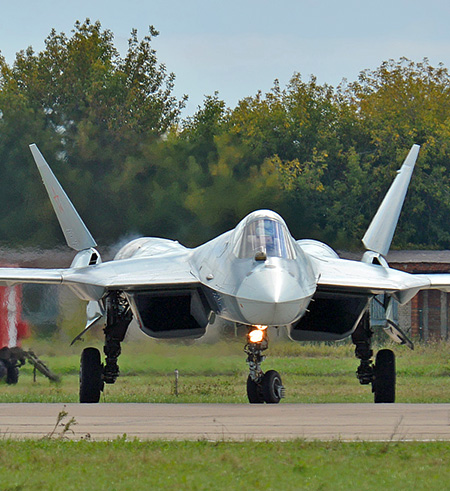
Pictured at Ramenskoye, the number 4 prototype of the PAK-FA displays a very flat silhouette which must definitely improve the stealthiness of the new Sukhoi fighter jet in combat. The massive and sturdy landing gear is fully adapted to operations from spartan airfields. ©S.Rimsha
Yuri B. Slyusar, the new President of the United Aircraft Corporation (UAC) —which since 2008 oversees all production of combat aircraft in Russia—, told Kommersant that the Russian Ministry of Defense has coordinated this position and consulted with his company : « In the period between 2016 and 2018, the Russian Air Force was scheduled to receive eight fighter jets annually, and in the years 2019 and 2020, fourteen such aircraft each year. We have now reached an understanding that, to begin with, we will sign a contract for only one squadron of T-50s (i.e. twelve aircraft). After that, we will decide how many of these the air forces still need – and how much the country can afford. »
Let’s recall that the PAK FA project started in 2002, and two years later, a model of the aircraft was presented to Russian President Vladimir Putin. The T-50 prototype first flew on 29 January 2010 and this same year Vladimir Putin made it clear that the first phase of the aircraft’s development had cost around some 30 billion rubles. For completion of the project, a similar amount would be required was it revealed. By the end of 2013, five T-50 prototypes had been flown, with the fifth prototype performing its maiden flight on 27 October 2013. It is said that the PAK-FA program has amassed more than 600 test flights to this date.
The prototypes and initial production batch will be delivered with a highly upgraded variant of the NPO Saturn AL-31F used by the Su-27 family as interim engines while a new clean-sheet design powerplant, the more powerful AL-41F1, is currently under development specifically for the PAK-FA.
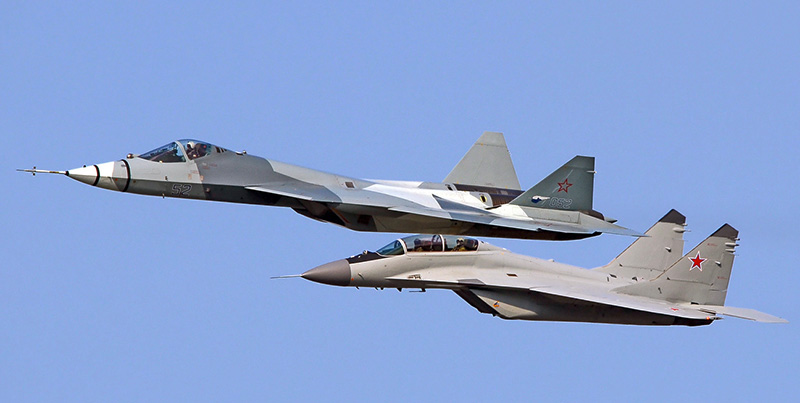
The Sukhoi T-50 number 2 prototype in flight, escorted by a MiG-29UB chase plane. The extremely low silhouette of the T-50 shows well in comparison. In the T-50 the pilot’s rearview is much better than that of the JSF. The first two T-50 prototypes display a long nose Pitot tube for test measurement purposes. ©D.Yakovlev
Russia’s Centre for Analysis of World Arms Trade predicts that the PAK FA will be available for export in 2025 with Vietnam already listed as the first in line… The export price of the PAK-FA will be just less to that of the current Dassault Rafale F3R, something which is not a very positive omen for the French military aviation industry. The situation should become even worse for the USA and the Lockheed Martin F-35, the most expensive warplane ever with a price tag of $100 a piece for the « cheapest » baseline model! Export-wise, it is quite predictable that in the end the balance should legibly tip to Russia’s advantage with the PAK FA. At which time China will also join the fray with its own “fifth generation” fighters.

